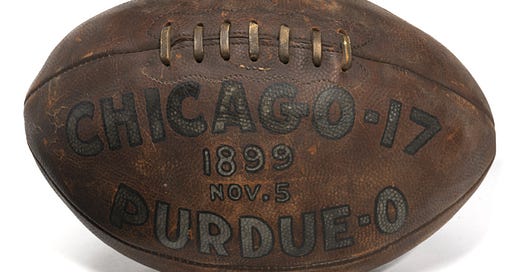Since footballs were first produced and sold commercially, their makers have sold balls of varying quality and pricing. Often, customers purchased the highest-quality balls for use in match play because they wanted to avoid problems with the ball that might affect the enjoyment or outcome of games. In contrast, lower-quality and less expensive balls were used in practice, by lower-level teams, or in backyard play.
So, we will first cover game balls and the traditions and practices surrounding their use before moving to special-purpose footballs produced for training and practice rather than gameplay.
Game Balls
The NFL uses up to 36 footballs per game. Each team submits twelve balls they have prepared to meet their quarterbacks' tackiness and other preferences. The officiating crew inspects the team-submitted balls before the game to ensure they comply with league standards, following each team's secret sauce preparations. In addition, Wilson sends twelve balls straight from the factory for use on kicking plays. Kicking or K-balls entered the game in 2007 after the NFL decided teams took too many liberties in selecting the balls used by kickers.
Using 36 footballs per game would seem preposterous to the game's old-timers, who treated game balls like sacred objects. By tradition and then by rule, early American football used one ball for the entire game. Football did not acquire its one-ball per-game tradition from rugby since rugby did not have such a rule. The Rugby School traditionally switched balls at halftime of big matches, but that tradition did not spread to the broader rugby community. Instead, the number of balls used per game was unspecified.
Top-quality footballs were treated as sacred objects in 1800s America, though they cost about the same as today in real dollars. At the time, lower-level schools might struggle to buy one or two high-quality footballs yearly, but budgets were not the issue for elite Eastern colleges and other high-level teams. Ticket sales and alumni contributions paid for team travel, training tables, and equipment expenses, so they had the money to buy more than one ball per game if they wanted.
Keep reading with a 7-day free trial
Subscribe to Football Archaeology to keep reading this post and get 7 days of free access to the full post archives.



